
Fancy diving into the exhilarating world of wild swimming? Maybe you don’t have the best wild swimming gear already. But if you’ve got a half-decent swimsuit and a towel to dry off with afterwards then in theory that’s enough to get started. After all, you’re made of sterner stuff right?
Well, while it’s true that wild swimming is not as gear-intensive as pursuits like bikepacking or hiking, there are still some essentials it’s worth getting hold of before your first dip.
You definitely don’t need to cover yourself in head to toe neoprene, but you’ll probably have a much better experience if you invest in a few essentials. Read on for our guide to the kit every wild swimmer should own, plus some handy optional extras.
What should I wear wild swimming?
Swimsuit or wetsuit?
If you’re new to open water swimming then you could try swimming in an old surf suit, but if you’re half serious about the idea we recommend investing in one of the best swimming wetsuits. Although they may seem pricey at first glance, a good one will last you many years (I have one that’s nine years old and still going strong).
Open water is not like your local pool. Even in the height of summer, all but the most tropical waters will still feel chilly when you first get in, and wearing a wetsuit will help you stay warmer for longer, and also help you float. Swim wetsuits have more flexibility in the shoulders than surf wetsuits and usually have a perfectly smooth surface to reduce friction in the water as well.
Once you’ve been wild swimming for a while, you may find you can handle the cold better, and may prefer to just wear a swimsuit on the warmest days - it’s a really personal choice. People who swim ‘skins’ (without a wetsuit) will tell you they feel more connected to the water, but for most swimmers any water below 64.4°F / 18°C will feel cold. Note that body fat keeps you warm, so if you’re very lean you will probably need to wear a wetsuit more often than someone who’s carrying a little extra.
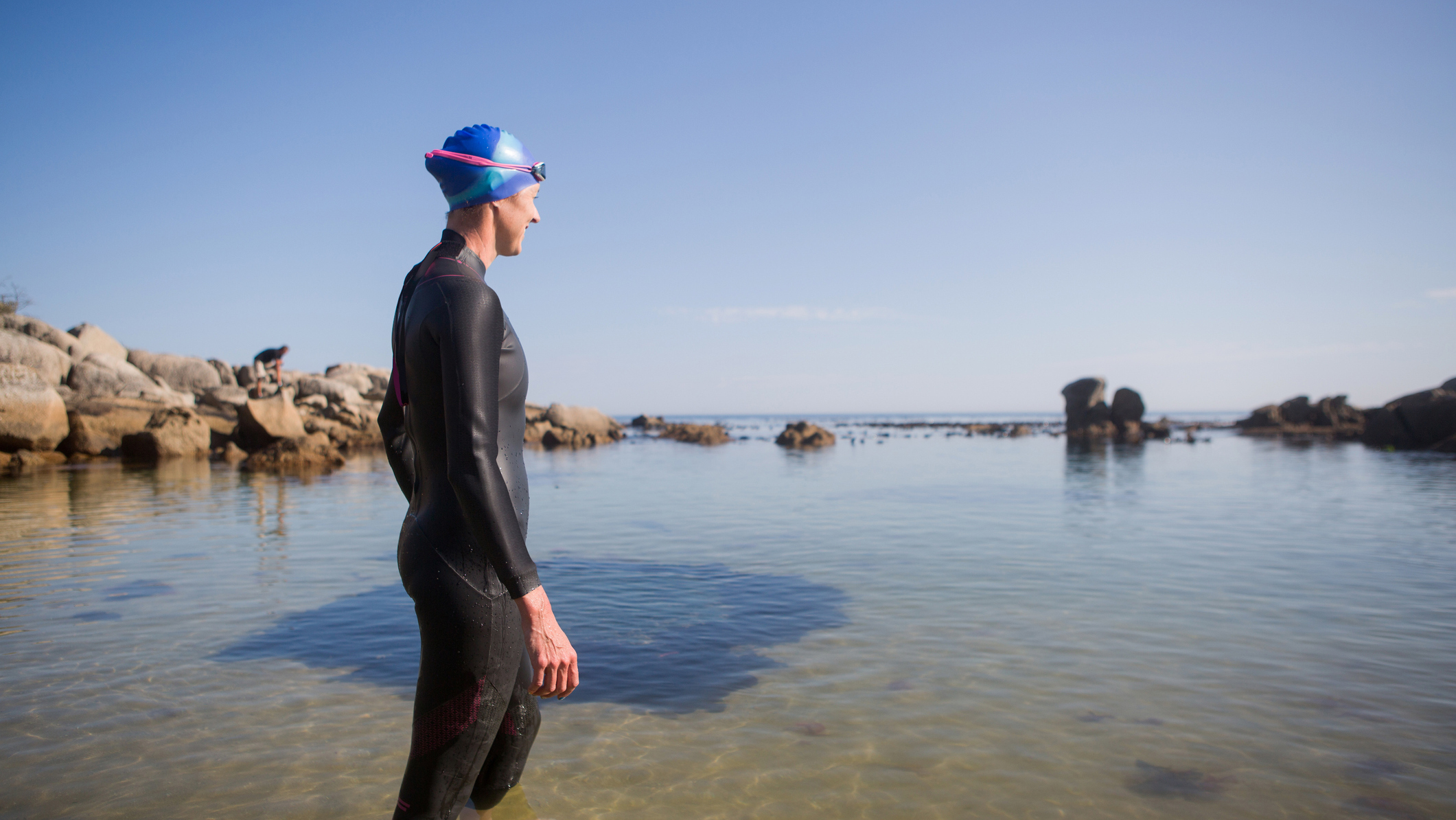
Do I need goggles for wild swimming?
If you want to put your face in the water (see how to stay safe in open water for whether you should or not!) then you need a pair of goggles. The best goggles for wild swimming have a polarized coating, that cuts out glare on the sunniest of days, but still allows you to see normally when it’s cloudy. Getting goggles that fit perfectly can require a bit of trial and error, so if you already have goggles for pool swimming then see if you can get a polarized pair from the same brand. Failing that, a mirrored pair for sunny days and a clear pair for overcast weather will also do the job.
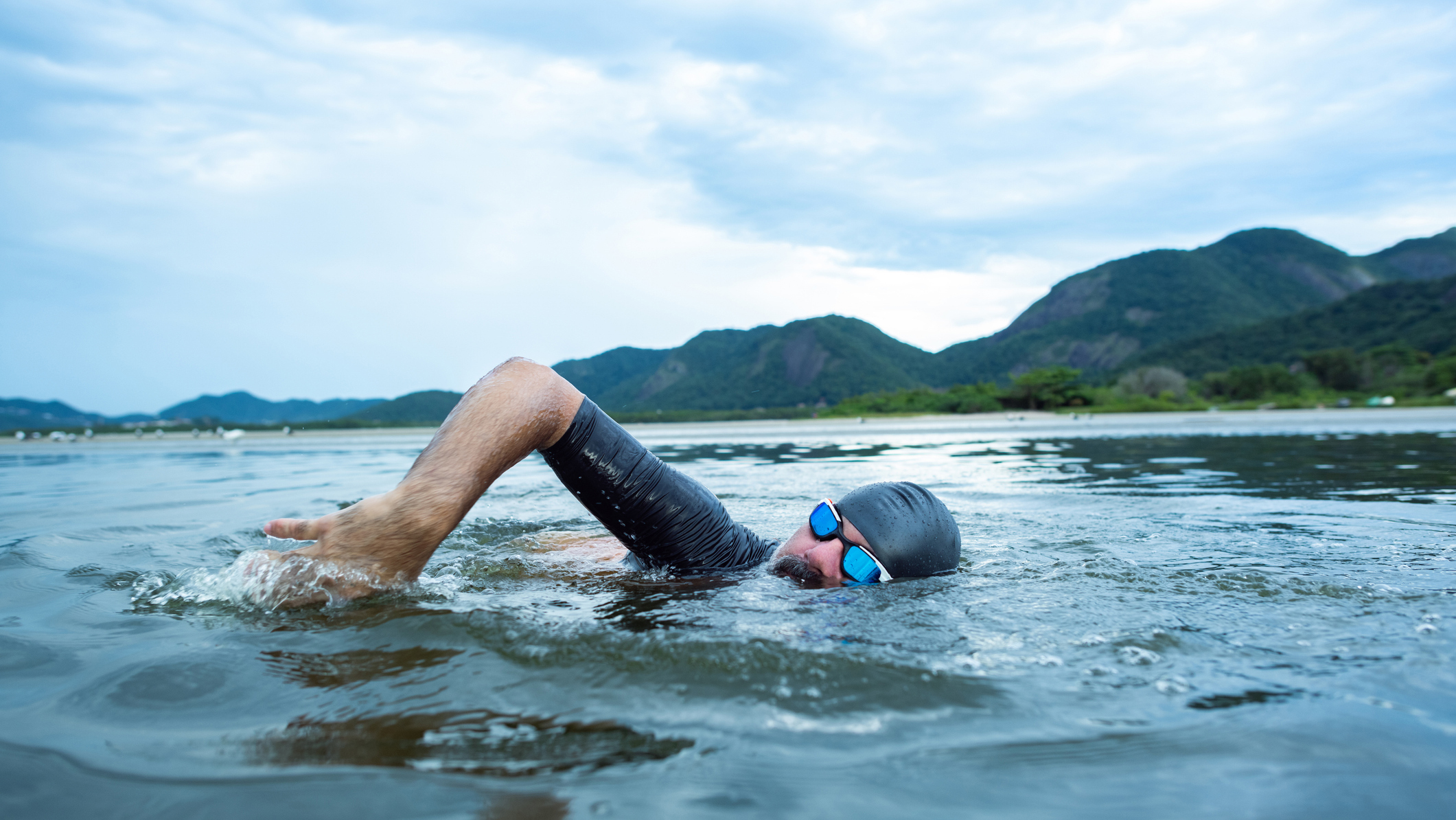
Do I need swimming boots and gloves?
The best swimming boots and gloves can make all the difference when you’re swimming in cold water. Your hands and feet have very little protective fat and lots of nerve endings, which means they can get painful quickly if the water is chilly, so donning a pair of each can really extend your swimming season.
During winter I don’t actually wear a swimming wetsuit as I find the amount of time needed to get in and out of it for a short swim isn’t worth it, and means it takes longer to warm up afterwards as I’ve spent so long struggling out of it! Instead I wear a long-sleeve swimsuit, sometimes with a neoprene vest underneath to protect my core, boots, and a wooly hat if I’m not going to put my face in.
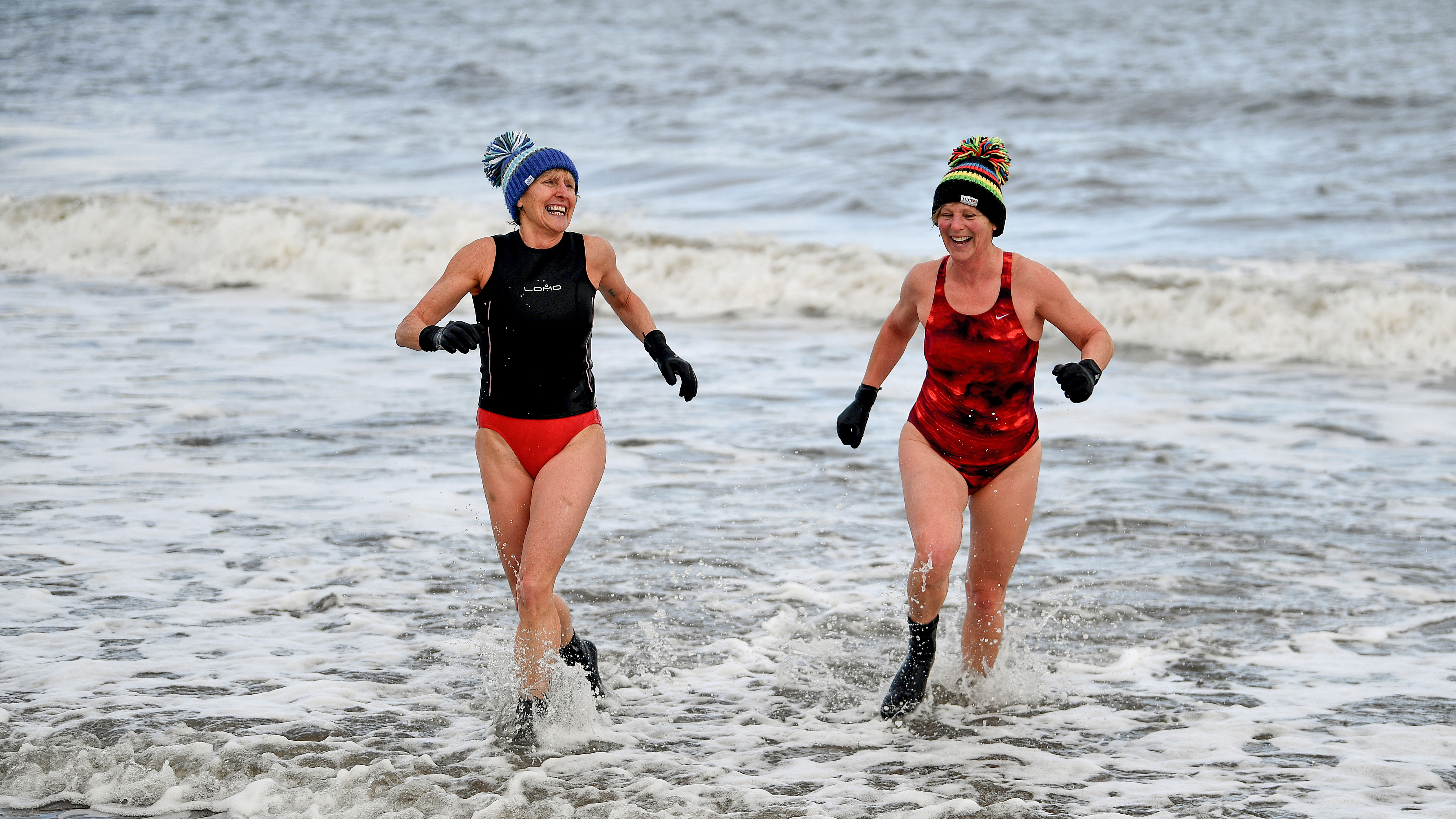
Should I buy a changing robe?
If you’re swimming in cold water regularly, then you will want one of the best changing robes to help you heat you afterwards.
A changing robe is an oversized long coat, usually with a hood, that you can pull on as soon as you get out of the water. It’s really meant for people who wear swimsuits rather than wetsuits - taking a wetsuit off inside a changing robe isn’t impossible but you might dislocate something!
When wild swimming, take something to stand on - a yoga mat is a good option as it provides some insulation, and make sure you have gloves and warm socks and shoes to pull on as soon as possible. Take a hiking flask of tea or hot chocolate, but don’t fall for the old adage that brandy warms you up. It simply isn’t true! Your skin may feel warmer to the touch for a while, but alcohol actually causes you to lose body heat more quickly.
Some changing robes, like the Bluefin Heatwave, have a big inner pocket where you can stash a hot water bottle to warm you up even more after your swim.
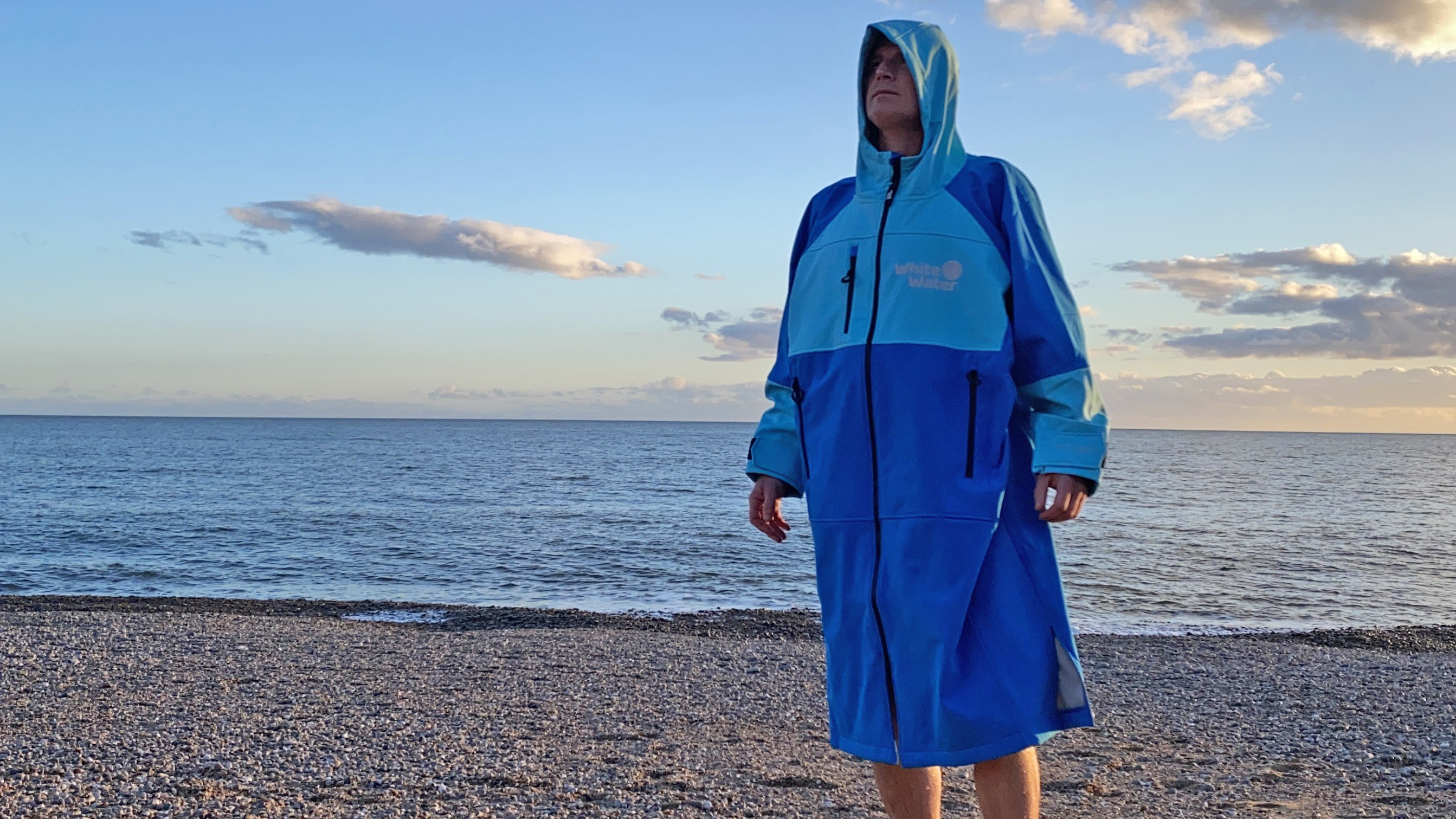
Other wild swimming kit to consider
Swim hat
A rubber swimming cap will keep your locks dry-ish, add a little buoyancy to your bonce (yes really), and keep you warmer when the water is cold. Most swimming hats are fairly similar, although you can also get ones made of neoprene with a chin strap for really cold water, and even neoprene swim balaclavas if you’re going to be facing icy conditions.
If you’re winter swimming and won’t be putting your head in, it’s a great idea to wear a wooly hat. One made of pure wool will be better at repelling at splashes that come your way - just make sure you have a second, dry one ready for when you get out!
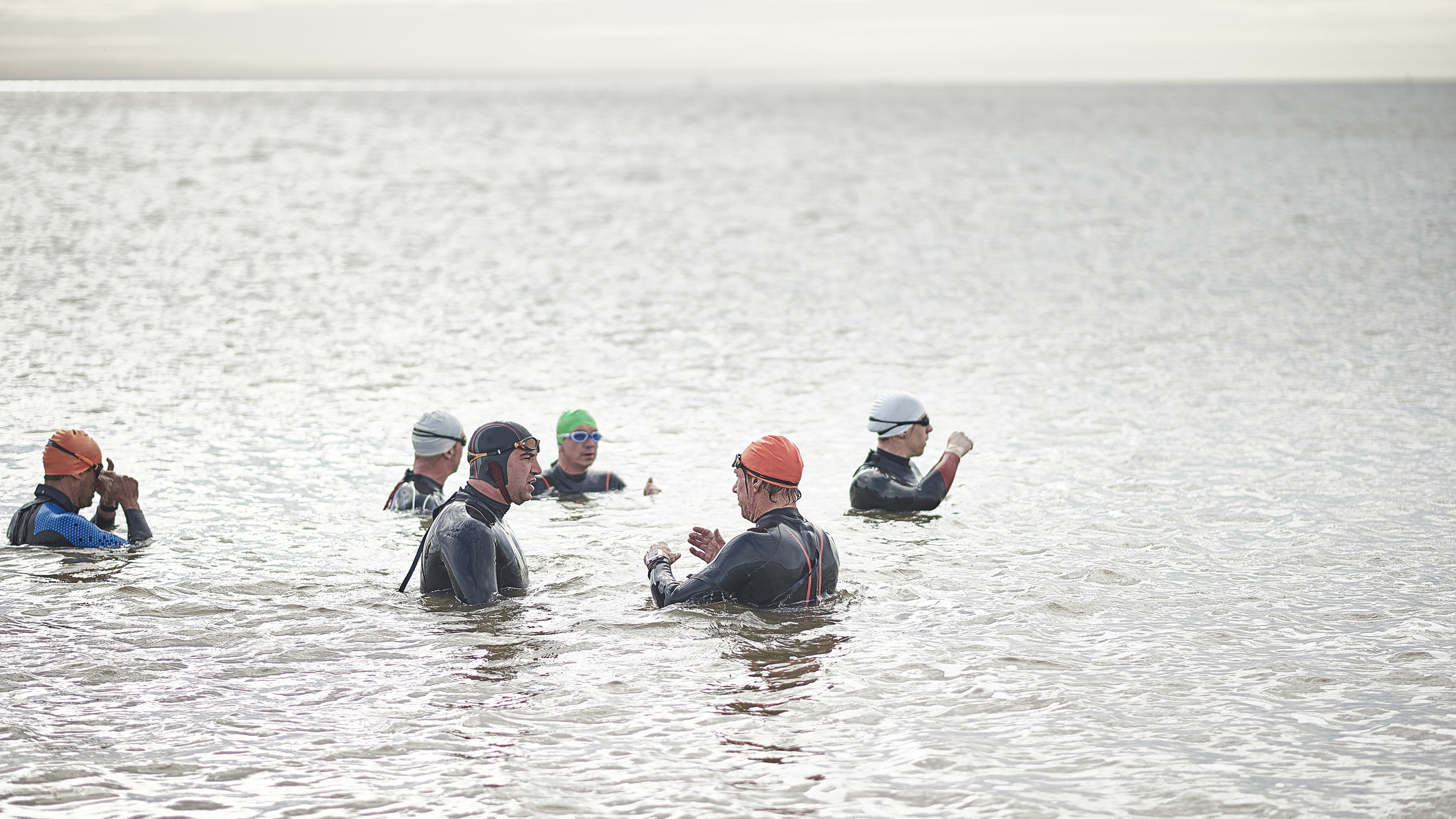
Dry bag
I was tempted to list this under essential kit, but having lugged my swim stuff in various tote bags and rucksacks over the years, I’d say one of the best dry bags is more of a luxury item. However, now I’ve got one, I’ll never go back. A drybag allows you to stash your valuables river or lakeside, safe in the knowledge that they’re not going to get damaged while you’re in the water - even if someone accidentally kicks your bag in. Then, once you’ve changed (see our guide to the best changing robes) you can dump your wet kit in it and know it won’t leak all over everything until you get home.
The simplest ones have a roll top and a backpack harness if you’re lucky (see how to use a drybag), but it’s now possible to get drybags that are insulated, so you can use them as a cooler, have drainage valves, multiple straps and handles to be used in different ways, and loops and clips to fix them to a paddleboard or kayak if, like me, you love to combine your swimming with a paddle downriver.
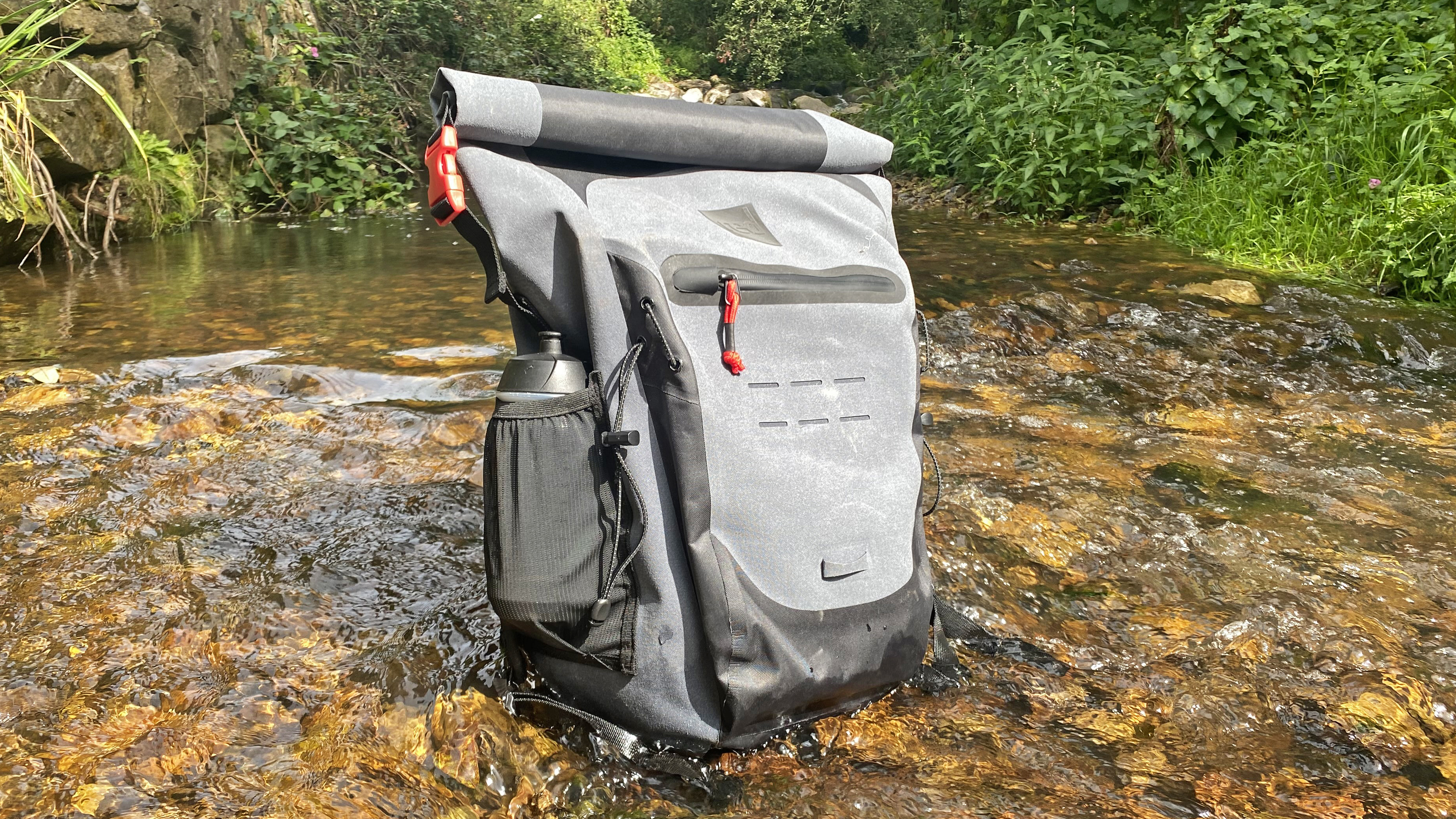
Tow float
If you’ve ever been out on the water and spotted swimmers pulling a little orange inflatable behind them, you’ve already seen a tow float. A tow float allows you to be seen by other swimmers and water users, and is especially useful if you’re sharing space with boats, paddleboarders or (please no) jet skis.
Although not designed to be a buoyancy aid, at a push, you can use it to hang off while you take a breather, and some open water swimming events have made them compulsory for what they say are safety reasons - although there are mixed views on this.
Tow floats do create extra drag, and so not everyone loves them, but if you’re doing a long swim, you can use one with a compartment to stash energy drinks and snacks, so you can top up on carbs without having to get out of the water.
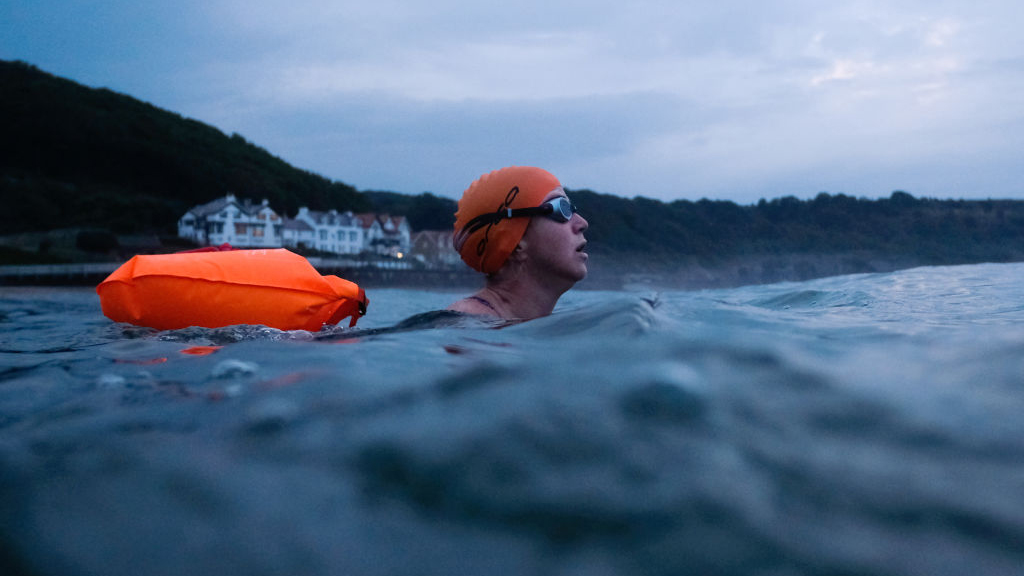
Key safe
Sorry what? You need a safe to go swimming? Well, not quite, but if you’re driving to your nearest wild swimming spot, then what do you do with your electronic car key? Yes, you can leave it on the wheel arch (no one ever looks there after all…) or under a pile of carefully positioned stones. But if you’re concerned at all that you may come back to find your car has vanished, then a small combination key safe you can lock to the tow bar of your car is one way to solve this.
To be honest, I’ve never bothered. I regularly leave my phone, keys and wallet stuffed under a rock in a mini dry bag while I swim and hope for the best, but if you’re a belt and braces kind of person then this is an approach to consider.







